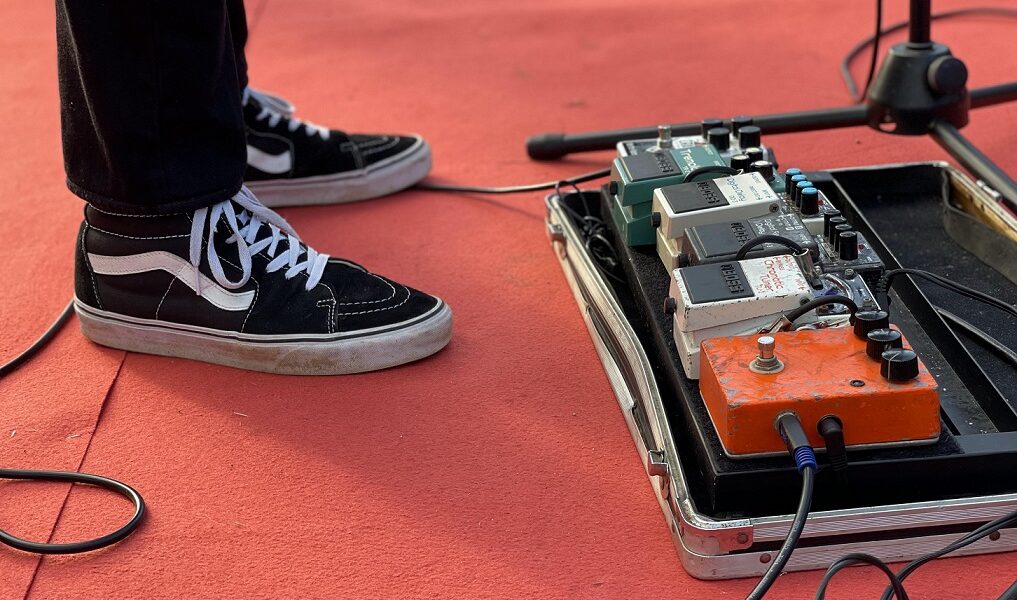Creating the perfect guitar tone is a pursuit that has inspired generations of musicians. While the guitar and amplifier play a crucial role, the pedal board is where you can truly shape and mold your sound. One of the key factors in crafting your unique tone is the order in which you arrange your effects pedals. The sequence of your pedals can drastically affect the final sound, so understanding how to optimize your effects chain is essential. In this article, we’ll explore the intricacies of pedal order, offering insights on how to make the most of your effects pedals and achieve the tone you’ve always dreamed of.
The Basics of Pedal Order
The signal chain on your pedal board refers to the order in which your guitar’s signal passes through your effects pedals before reaching your amplifier. Each pedal in your chain processes the signal in a particular way, and the order in which they are connected determines how these effects interact with each other, affecting clarity, dynamics, and overall effectiveness. While there are no rigid rules set in stone, certain conventions and guidelines exist for arranging your pedals.
Standard Pedal Order
Here’s a typical pedal order, and we’ll delve into the reasons behind it:
1. Tuner: The tuner pedal usually comes first in the signal chain. Placing it here ensures that your guitar’s clean and unprocessed signal is accurately detected for tuning purposes. It also allows for silent tuning when the pedal is engaged, muting your signal while you tune your instrument.
2. Filters and Dynamics: Filters and dynamics pedals, such as wah pedals, envelope filters, and compressors, are generally placed after the tuner. These effects influence the dynamics and frequency response of your signal, so it makes sense to apply them early in the chain, before any distortion or time-based effects.
3. Gain Effects: Gain effects, including overdrive, distortion, and fuzz pedals, come next in the signal chain. These effects add grit, saturation, and sustain to your tone. Placing them after the filters and dynamics pedals ensures that their character isn’t masked or altered by subsequent effects.
4. Modulation Effects: Modulation effects, such as chorus, flanger, phaser, and tremolo, typically follow the gain effects. These effects alter the frequency, timing, or amplitude of your signal. Placing them after the gain effects allows them to modulate the already distorted signal, creating rich and textured tones.
5. Time-Based Effects: Time-based effects, including delay and reverb, are usually placed at the end of the signal chain. These effects rely on a clean and unprocessed signal to create spaciousness and ambience. By placing them last, they can be applied to the final, processed sound, adding depth and dimension to your tone.
Optimizing Your Pedal Order
While the standard pedal order offers a solid starting point, it’s crucial to understand that there’s room for customization. Music is about creativity, and sometimes breaking conventions can lead to the most unique and appealing sounds. Here are some additional tips to help you optimize your effects chain:
1. Experiment with Alternative Placements: Don’t be afraid to try different pedal placements within the signal chain. Depending on the specific pedals you’re using and the sound you want to achieve, you may find that certain effects work better in a different order. For example, placing a modulation effect before a gain effect can create unique textures and tones.
2. Consider Parallel Effects: Parallel effects involve splitting your signal and running it through two or more separate effects paths, then recombining them. This technique allows you to blend different effects together, such as running a distorted signal alongside a clean signal. Experimenting with parallel effects can open up new sonic possibilities and add complexity to your sound.
3. Buffering and True Bypass: Consider the buffering and true bypass capabilities of your pedals. Buffered pedals help preserve your guitar’s signal strength and tone over long cable runs or when multiple pedals are used. True bypass pedals allow the unprocessed signal to flow through when the pedal is disengaged. Placing buffered pedals strategically in your signal chain can help mitigate any signal loss or degradation caused by long cable runs or multiple pedals.
4. Feedback Loops: Feedback loops involve sending the output of one effect back into itself or into another effect. This technique can create unique and experimental sounds. For example, running the output of a delay pedal into a reverb pedal and then back into the delay pedal can produce atmospheric and ambient textures. Experimenting with feedback loops can yield unexpected and inspiring results.
5. Practical Considerations: In addition to sonic considerations, it’s important to think about the practical aspects of your signal chain. Consider the physical layout of your pedal board and the accessibility of each pedal. Placing frequently used pedals within easy reach can help you make adjustments on the fly during performances.
Optimizing your pedal order is a crucial step in achieving the best sound and maximizing the potential of your effects pedals. While there are general guidelines to follow, such as placing filters and dynamics before gain effects and time-based effects at the end, don’t be afraid to experiment with alternative placements and explore creative signal routing options. Remember to consider the buffering and true bypass capabilities of your pedals, as well as the practical aspects of your pedal board’s layout. Your pedal board is a canvas for your sonic artistry, and by understanding and customizing your signal chain, you can unlock a world of creative possibilities and craft a truly unique and captivating guitar tone.

